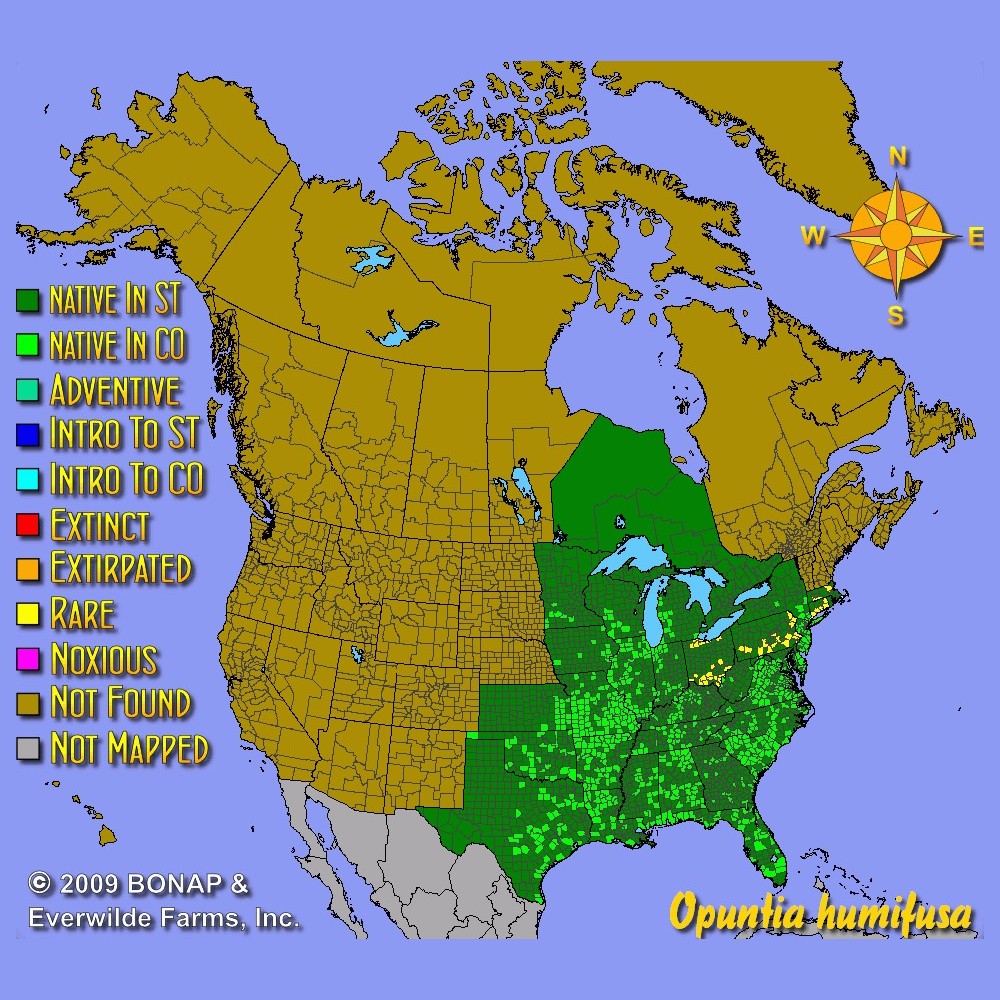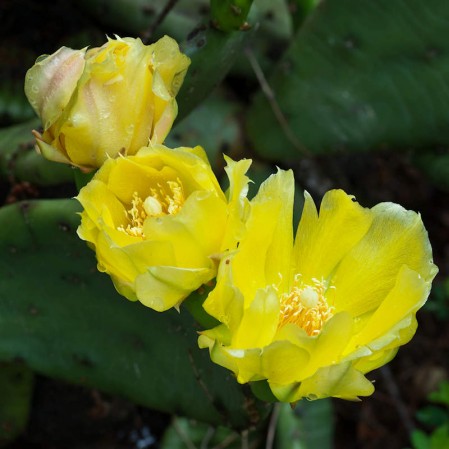Eastern Prickly Pear Seeds
- HOW TO GROW
- FAST FACTS
- REVIEWS
HOW TO GROW
Sowing: To soften the hard coating on these eastern prickly pear seeds, pour 180 degrees F water over them and allow them to soak for 24 hours before sowing. Direct sow in late fall, pressing them into the surface of the soil. For spring planting, mix the soaked Opuntia Humifusa seeds with moist sand and store in the refrigerator for 60 days before planting. Keep the soil lightly moist until germination. This seed can also be started indoors 6-8 weeks before planting in the spring; press the eastern prickly pear cactus seed into the surface of free-draining soil in a germination flat, covering it loosely with plastic to create high humidity.
Growing: To allow the seedlings to develop, control surrounding weeds. These incredibly tough plants tolerate drought extremely well, as well as being winter hardy. They grow in widely varied types of well draining soil, including pure sand. Plants usually begin blooming in their second or third year of growth. Once established in good growing conditions, they may spread; new plants can easily be rooted from cuttings.
Harvesting: These blossoms do not perform well as cut flowers, and are best enjoyed outdoors.
Seed Saving: Allow the fruits to remain on the plant until they have become extremely overripe. Remove the Opuntia Humifusa seeds and spread them out to dry. Store the eastern prickly pear seeds in the refrigerator until planting. Keep in mind that the seed will need to be soaked for several days before planting to remove the naturally occurring germination inhibitors.
FAST FACTS
Common Names: Low Prickly Pear, Devil' Tongue, Indian Fig, Smooth Prickly Pear
Latin Name: Opuntia humifusa
Species Origin: US Native Wildflower
Type: Native Wildflowers
Life Cycle: Perennial
USDA Zones: 4, 5, 6, 7, 8, 9, 10
US Regions: Plains/Texas, Midwest, Northeast, Southeast
Seeds per Ounce: 1,100
Stratification: Cold/Wet for 8 Weeks
Germination Ease: Stratify 8 Weeks
Sunlight: Full Sun, Part Sun
Height: 9 Inches
Color: Yellow
Bloom Season: Blooms Early Summer
Uses: Deer Resistant
Eastern Prickly Pear
I got exactly what I was looking for and my order arrived quickly
Still waiting
Can't review if i don't have your product
DESCRIPTION

HOW TO GROW
Sowing: To soften the hard coating on these eastern prickly pear seeds, pour 180 degrees F water over them and allow them to soak for 24 hours before sowing. Direct sow in late fall, pressing them into the surface of the soil. For spring planting, mix the soaked Opuntia Humifusa seeds with moist sand and store in the refrigerator for 60 days before planting. Keep the soil lightly moist until germination. This seed can also be started indoors 6-8 weeks before planting in the spring; press the eastern prickly pear cactus seed into the surface of free-draining soil in a germination flat, covering it loosely with plastic to create high humidity.
Growing: To allow the seedlings to develop, control surrounding weeds. These incredibly tough plants tolerate drought extremely well, as well as being winter hardy. They grow in widely varied types of well draining soil, including pure sand. Plants usually begin blooming in their second or third year of growth. Once established in good growing conditions, they may spread; new plants can easily be rooted from cuttings.
Harvesting: These blossoms do not perform well as cut flowers, and are best enjoyed outdoors.
Seed Saving: Allow the fruits to remain on the plant until they have become extremely overripe. Remove the Opuntia Humifusa seeds and spread them out to dry. Store the eastern prickly pear seeds in the refrigerator until planting. Keep in mind that the seed will need to be soaked for several days before planting to remove the naturally occurring germination inhibitors.
FAST FACTS
Common Names: Low Prickly Pear, Devil' Tongue, Indian Fig, Smooth Prickly Pear
Latin Name: Opuntia humifusa
Species Origin: US Native Wildflower
Type: Native Wildflowers
Life Cycle: Perennial
USDA Zones: 4, 5, 6, 7, 8, 9, 10
US Regions: Plains/Texas, Midwest, Northeast, Southeast
Seeds per Ounce: 1,100
Stratification: Cold/Wet for 8 Weeks
Germination Ease: Stratify 8 Weeks
Sunlight: Full Sun, Part Sun
Height: 9 Inches
Color: Yellow
Bloom Season: Blooms Early Summer
Uses: Deer Resistant
Reviews
Review
Eastern Prickly Pear
I got exactly what I was looking for and my order arrived quickly
Review
Still waiting
Can't review if i don't have your product





